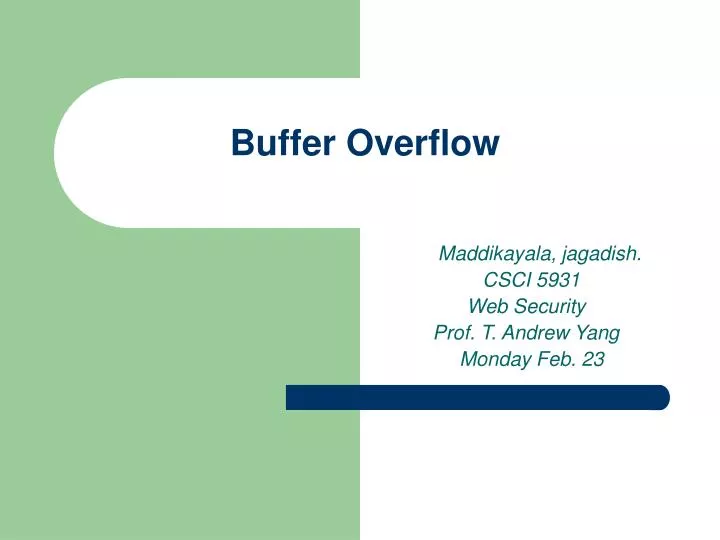
- #Suppress filewatcher internal buffer overflow how to#
- #Suppress filewatcher internal buffer overflow software#
- #Suppress filewatcher internal buffer overflow code#
- #Suppress filewatcher internal buffer overflow windows#
This means that we have a buffer overflow vulnerability on our hands and we have proven that we can overwrite the EIP. You should also notice something pretty interesting in Immunity Debugger:Īll of the registers have been overwritten by 41 (hex for A). You should notice that Vulnserver crashes: Finally, let’s execute our script and see what happens: In Immunity Debugger, click on File > Attach and select vulnserver.exe.
#Suppress filewatcher internal buffer overflow code#
Once you have your code written, load up Vulnserver and Immunity Debugger as administrator (very important). To see the command in action, open up Vulnserver and play around for a little bit.
#Suppress filewatcher internal buffer overflow windows#
It should be noted that the IP you use will be the Windows machine that is running Vulnserver, that Vulnserver runs on port 9999 by default, and the vulnerability we are attacking is the “TRUN” command. Performs a while loop, sending each increasing iteration of A’s to Vulnserver and stopping when Vulnserver crashes.

Sets the variable “buffer” equal to 100 A’s.Ģ. First, let’s write a simple Python fuzzing script on our Kali machine. Fuzzing allows us to send bytes of data to a vulnerable program (in our case, Vulnserver) in growing iterations, in hopes of overflowing the buffer space and overwriting the EIP. The first step in any buffer overflow is fuzzing. If an attacker can gain control of the EIP, he or she can use the pointer to point to malicious code and gain a reverse shell. This is an example of a buffer overflow and how poor coding can become dangerous.

Now, the A’s have completely escaped the buffer space and have actually reached the EIP. Now, let’s look at an example of a buffer overflow: The A’s did not escape the buffer space and thus, no buffer overflow occurred. In the above example, you can see that a a number of A’s (x41) were sent to the buffer space, but were correctly sanitized. Another way to think of this is that information placed into the buffer space should stop at the EBP as such: With proper input sanitation, information placed into the buffer space should never travel outside of the buffer space itself. Buffer space is used as a storage area for memory in some coding languages. The 4 components above actually sit in order from top to bottom.įor the scope of this tutorial, we really need to be concerned with buffer space and the EIP. Extended Instruction Pointer (EIP) / Return Address When we look into the memory stack, we will find 4 main components:Ĥ. – Mona Modules installed in your Immunity Debugger folder – Immunity Debugger installed on your Windows machine – Vulnserver installed on your Windows machine Your favorite hacking VM (I’ll be using Kali Linux) A Windows machine (preferably Windows 10) My goal is that by the end of this tutorial, the average reader will have a clearer understanding and less fear of buffer overflows. For most people breaking into cyber security, buffer overflows can be hard for someone to wrap their mind around. Hello everyone! I thought it would be helpful to provide a walkthrough of a 32-bit Windows buffer overflow.
#Suppress filewatcher internal buffer overflow how to#
This video covers how to correctly generate shellcode for buffer overflows, which will allow us to gain shell access to our victim machine. This video covers how to find the right module in buffer overflows, which will allow us to avoid memory protections (such a DEP, ASLR, etc.) and find a valid return address.

We will examine the ESP dump and learn what bad characters look like, how they interact with shellcode, and their importance. This video covers how to find the find bad characters in a buffer overflow process. This video covers how to control and overwrite the EIP in buffer overflows, which will lead to malicious code execution.

This video covers how to find the EIP offset in buffer overflows, which will allow us to point to malicious shellcode later on.
#Suppress filewatcher internal buffer overflow software#
This video covers the art of fuzzing in buffer overflows, which allows us to identify if a command is vulnerable in software and approximately how many bytes it takes for an overflow. This video covers the art of spiking in buffer overflows, which allows us to identify vulnerable commands within a program. In future course videos, we will be covering: I also highlight important aspects, such as the anatomy of memory and the anatomy of the stack. This video presents the material that will be covered in my course, Buffer Overflows Made Easy.


 0 kommentar(er)
0 kommentar(er)
